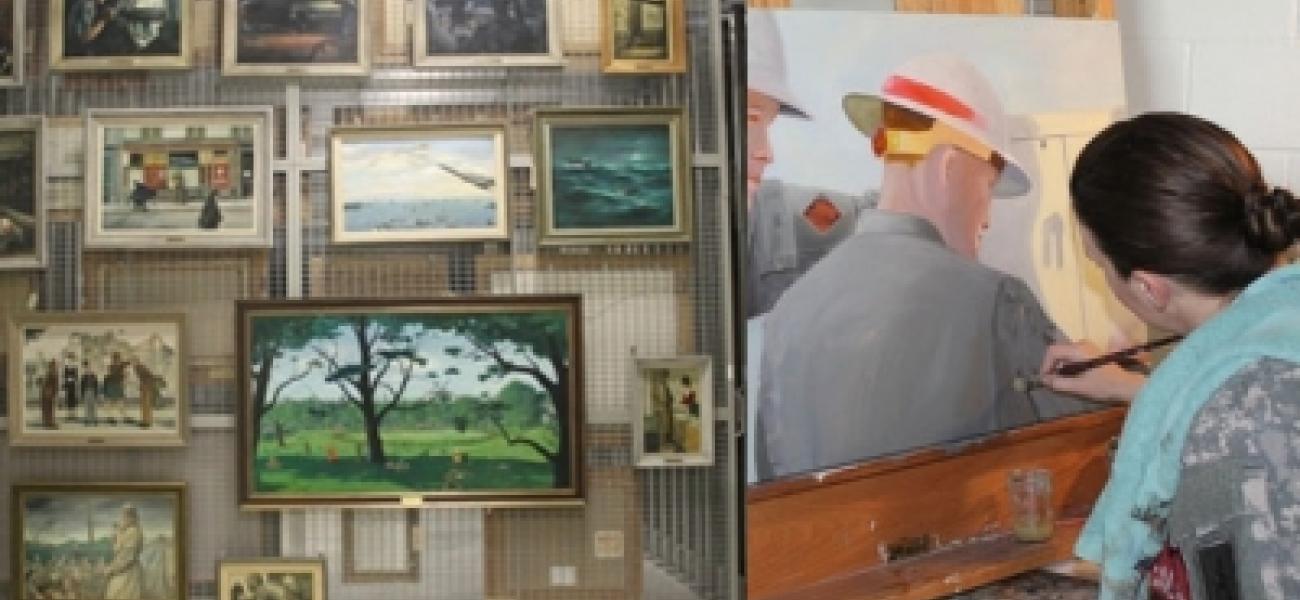U.S. Army sits on treasure trove of art


Featured on wnd.com
Deep in the bowels of Fort Belvior, Virginia, a perfectly climate- controlled warehouse is crammed with thousands of paintings that almost no one ever sees.
Part of the U.S. Army Center of Military History, the massive collection hangs obscurely on wire grids in perfectly catalogued and maintained ranks, museum fashion. Unfortunately there is no museum – not yet anyway.
It’s been a long wait.
The Army officially began to collect and create art during World War I, sending eight artists to record the adventures of the American Expeditionary Forces in Europe. Blossoming with the scale of war, WWII saw 42 artists from military and civilian ranks until Congress whacked funding in 1943.
Army art, however, refused to die, thanks to the entrepreneurial interventions of two large companies. Yes, corporations saved the day. Life Magazine employed artists as war correspondents, and Abbott Laboratories sent artists along with the Army Medical Corps.
New drawings and paintings are still being created through the Army Staff Artist Program and a similar Air Force program. Artists come from civilian and military ranks and either work stateside or are embedded in real missions – even some dangerous ones.
But back in Fort Belvoir, Sgt. 1st Class Amy Louise Brown works in a warehouse studio in the most coveted position in the Army Art program as artist in residence. Brown was a high school art teacher who enlisted as a multi-media illustrator after 9/11 and applied for the position.
“I had no idea how competitive it would be,” she recalls in an interview with Buzzfeed. ” I pretty much had to have my career scrubbed by the branch to make sure that I was a good fit for this job, and I guess begging probably didn’t hurt.”
Sgt. Brown, working in a painter’s apron over fatigues and combat boots, has not been tasked with the commemorating the crueler aspects of war. Although she was sent to war zones for preparation, tender scenes of camaraderie, medical care and even emergency rescue scenes are generally the stuff of her work.
While deployed in Afghanistan, Brown documented damaged vehicles being dismantled for scrap metal, an environmentally friendly action and not the sort of thing associated with war. Still she considers herself a soldier first, not only an artist.
“When it’s time to do business, if they’re digging a hole, I’ll dig a hole too,” she says.
WWII artists also covered mundane and humanizing actions of troops such as Floyd Davis’ “GI in a Perfume Shop.” He cleverly documented soldiers in France by imitating French Post-Impressionism in this light painting.
Other pieces are more rousing, with bombs bursting in air, strafing and burning. These often come from artists who are embedded in military missions and face hostile actions firsthand.
One of the first combat artists sent to Vietnam, Roger Blum’s “Patrol in the Jungle” is a moody monochromatic thing with a menacing, almost poisonous atmosphere.
Click here to read the full article.